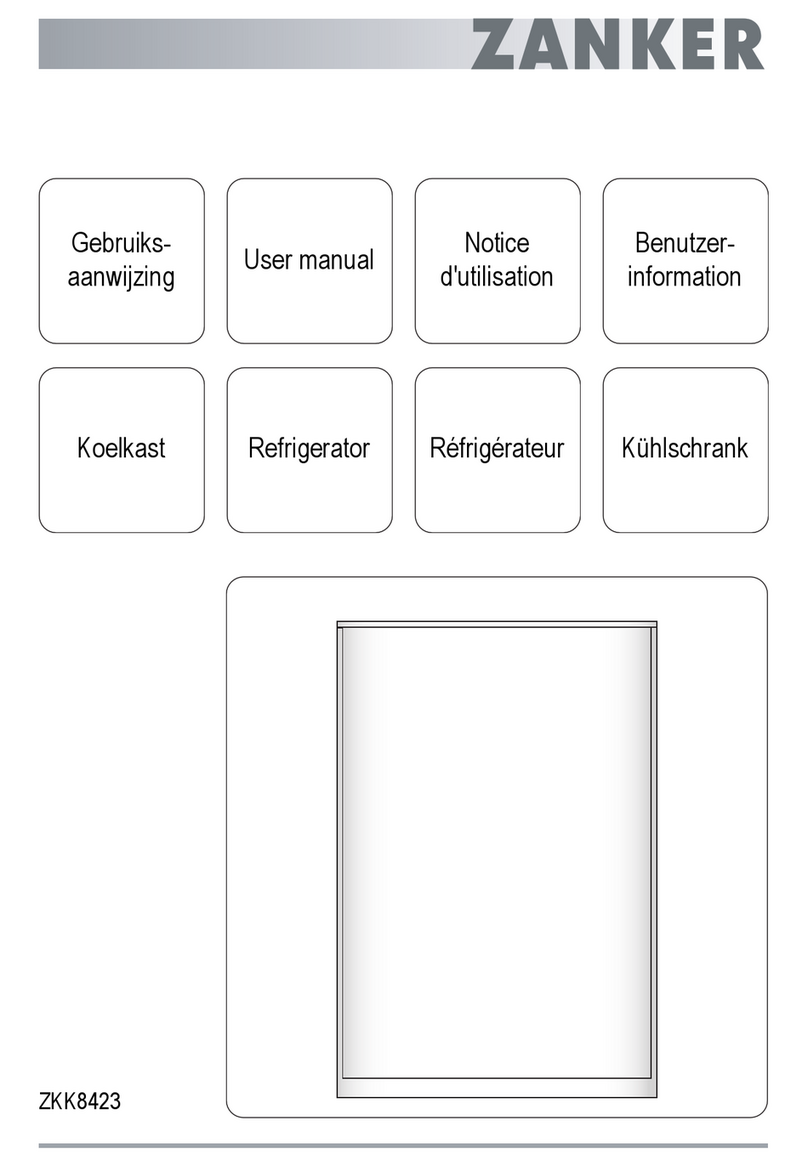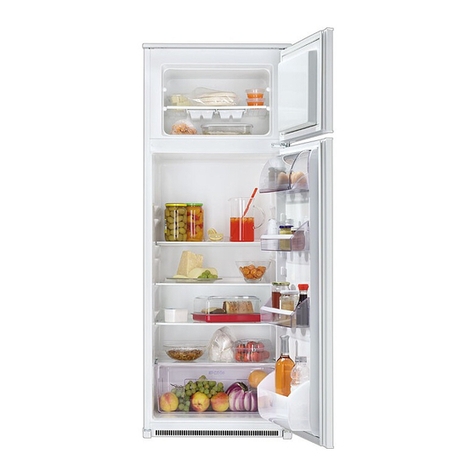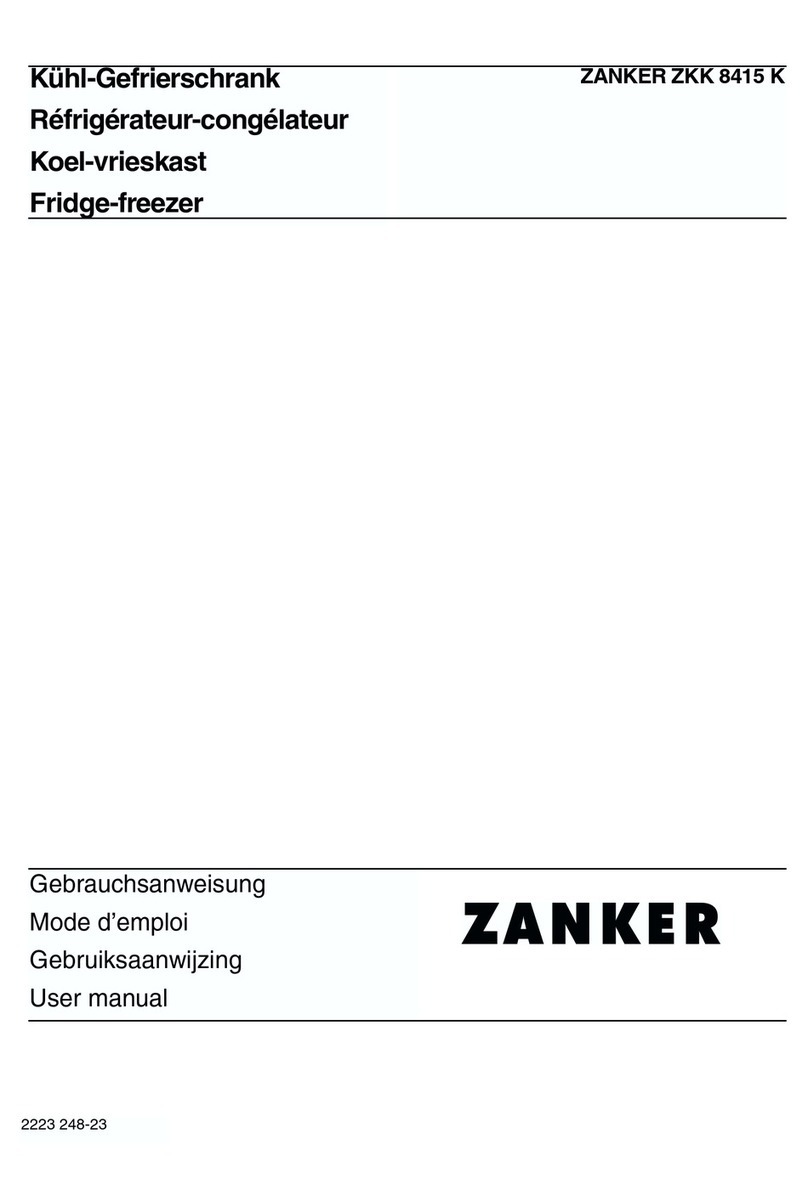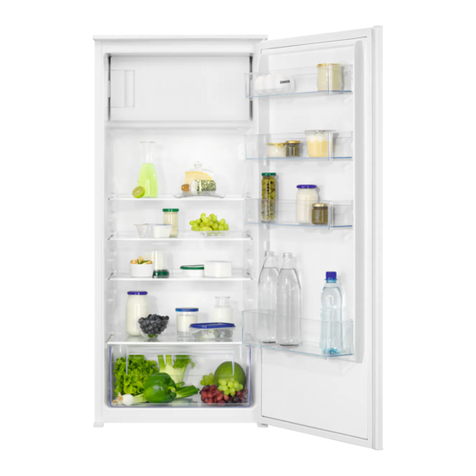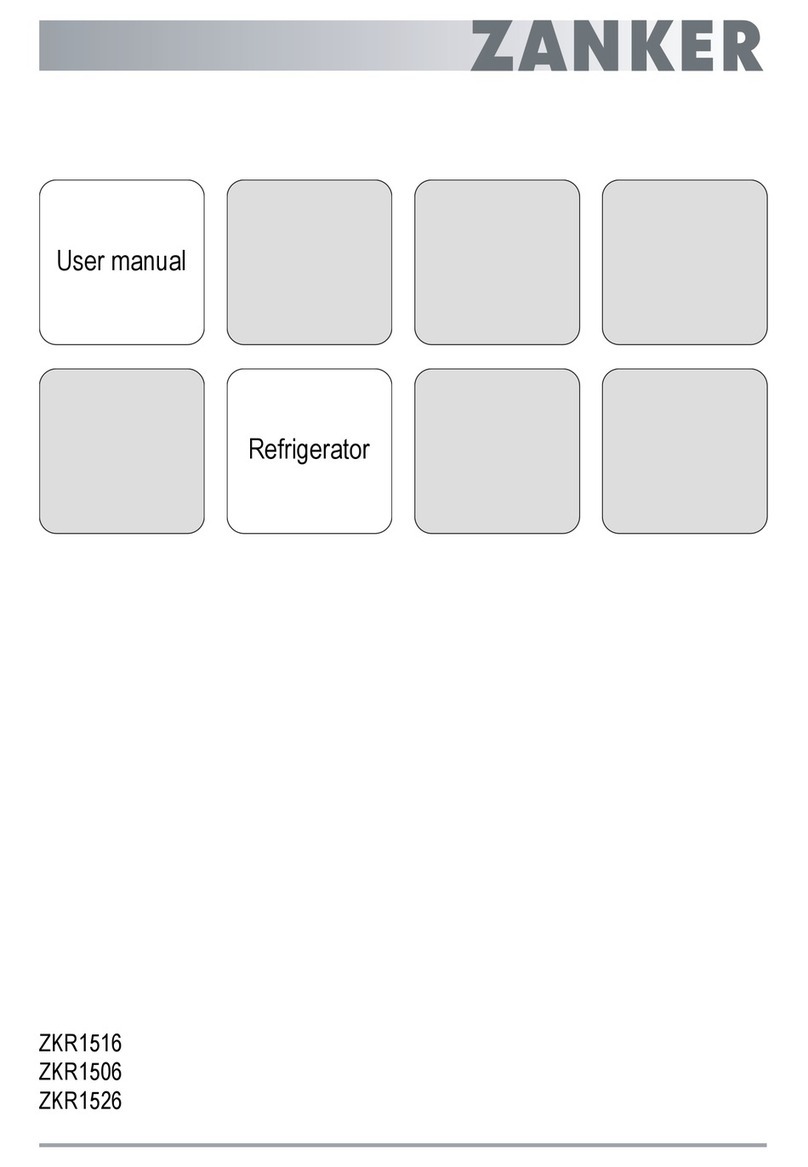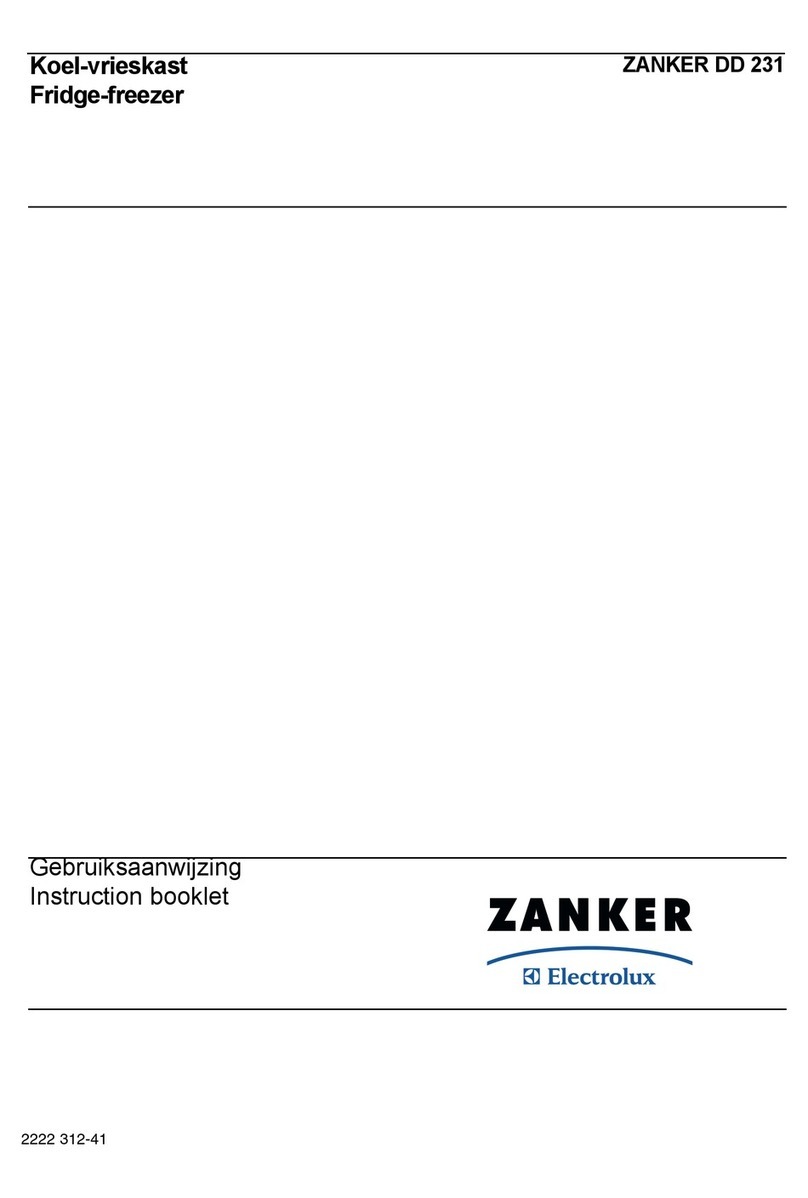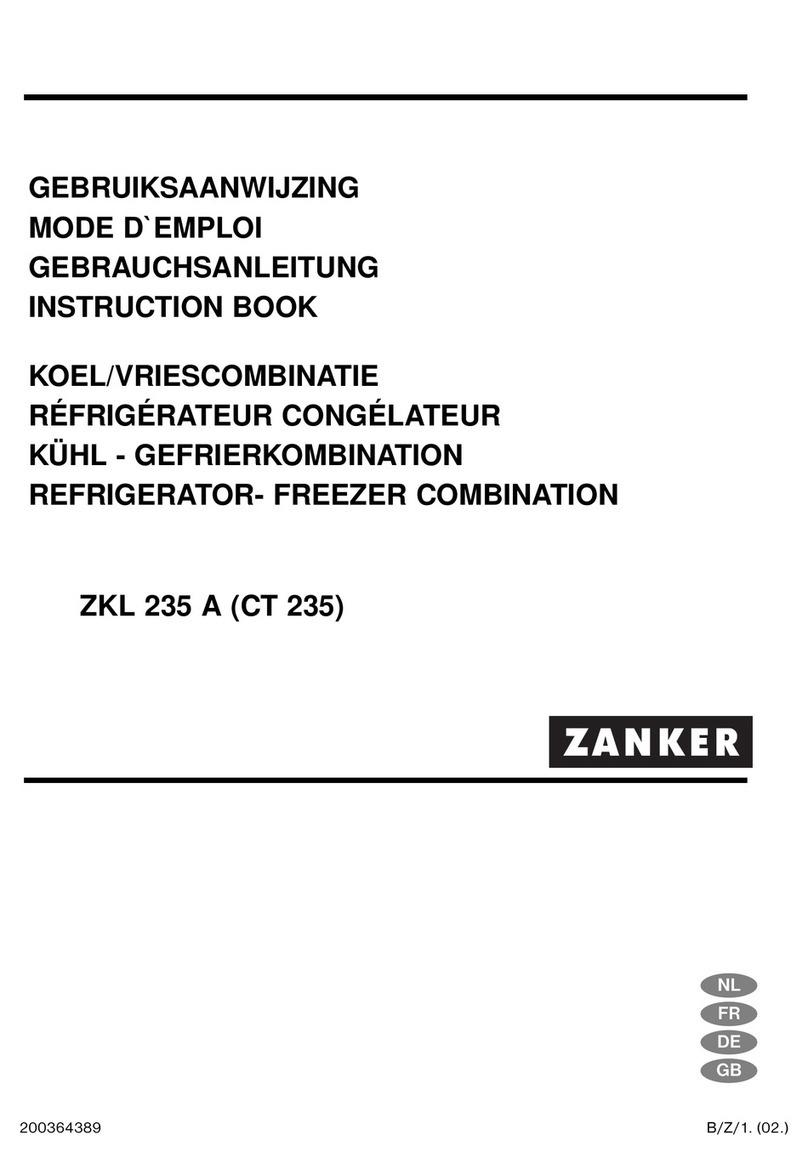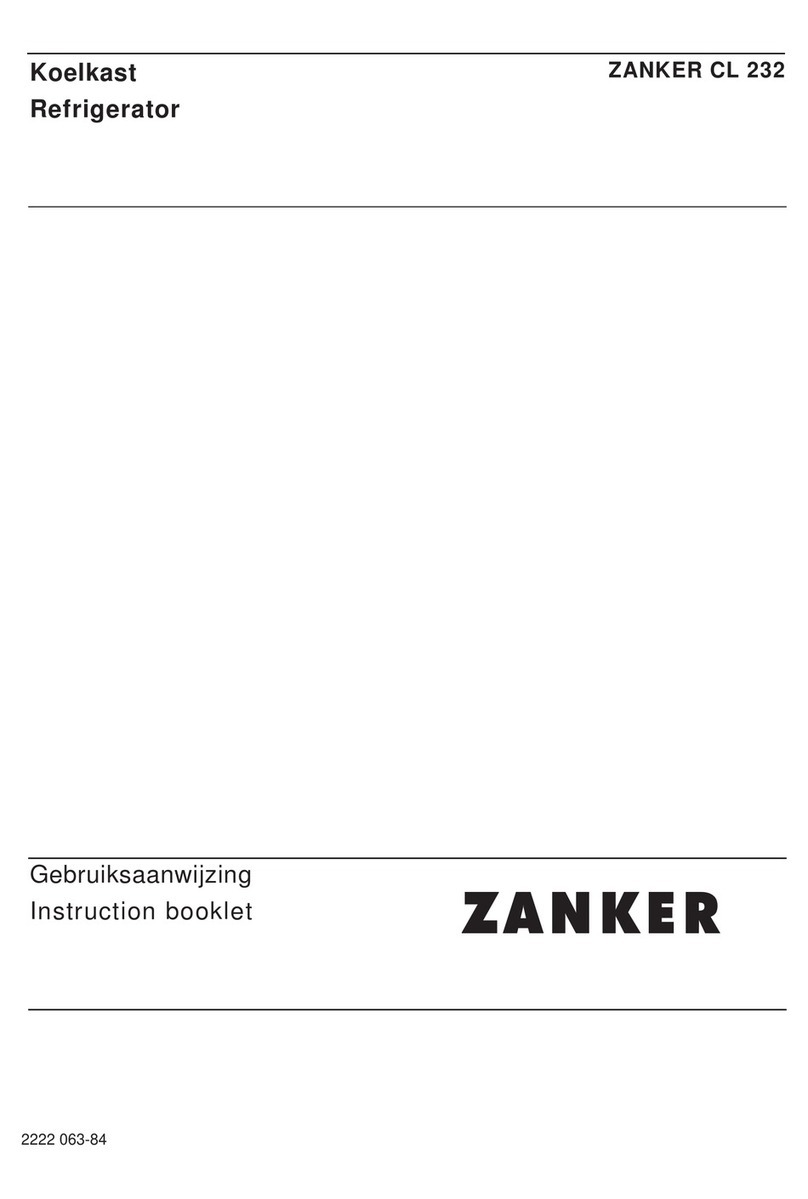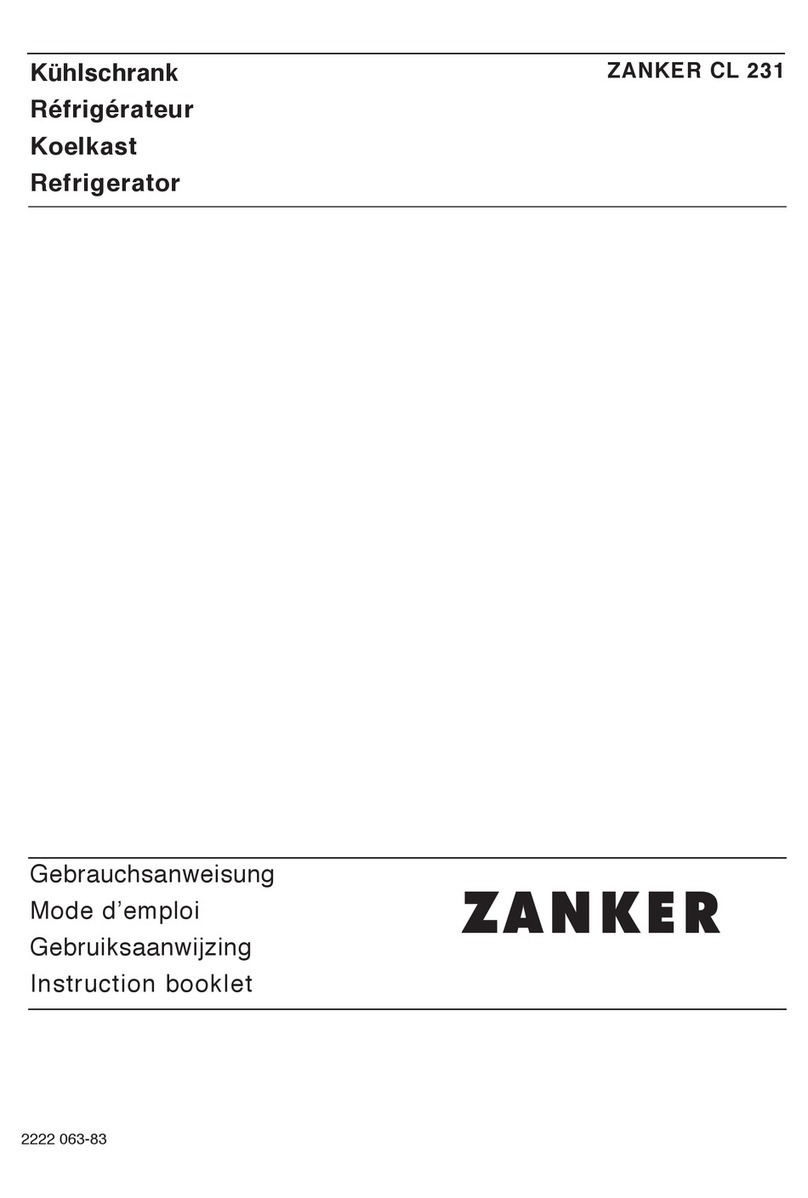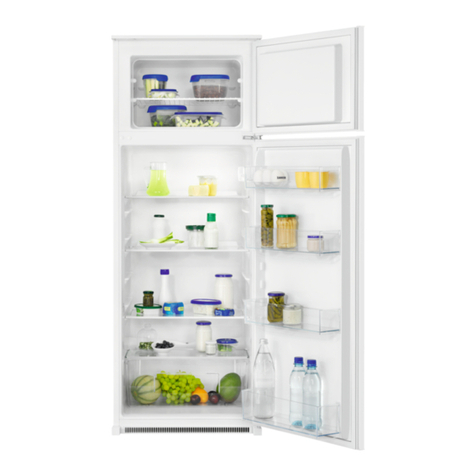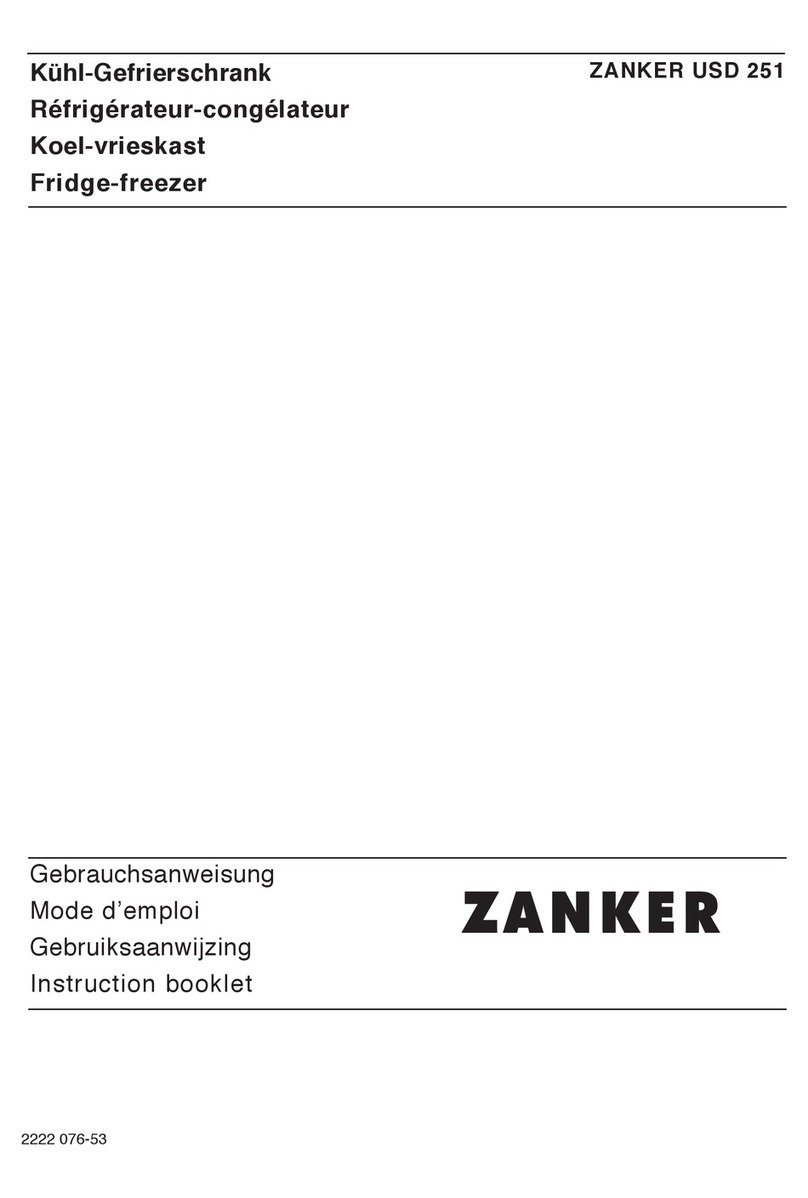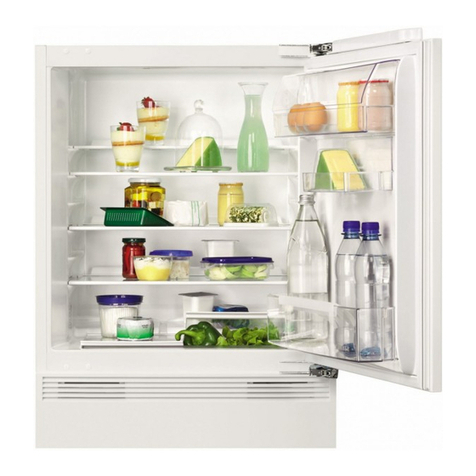
Het bewaren van ingevroren voedsel
Als u het apparaat voor het eerst of na een periode dat
het niet gebruikt is inschakelt, dient u het apparaat
minstens 2 uur op een hoge instelling te laten werken
voordat u er producten in plaatst.
WAARSCHUWING! In het geval van
onbedoelde ontdooiing, bijvoorbeeld als
de stroom langer is uitgevallen dan de
duur die op de kaart met technische
kenmerken onder "maximale bewaartijd
bij stroomuitval" is vermeld, moet het
ontdooide voedsel snel geconsumeerd
worden of onmiddellijk bereid worden en
dan weer worden ingevroren (nadat het
afgekoeld is).
Ontdooien
Diepgevroren of ingevroren voedsel kunt u, voordat het
gebruikt wordt, in het koelvak of op kamertemperatuur
laten ontdooien, afhankelijk van de hoeveelheid tijd die
hiervoor nodig is.
Kleine stukken kunnen zelfs rechtstreeks vanuit de
vriezer gekookt worden als ze nog bevroren zijn: in dat
geval zal de bereiding iets langer duren.
Aanwijzingen en tips
Normale bedrijfsgeluiden:
De volgende geluiden zijn normaal tijdens de werking:
• Een zacht gorgelend en borrelend geluid als het
koelmiddel door leidingen wordt gepompt.
• Een zoemend en kloppend geluid van de
compressor als het koelmiddel wordt rondgepompt.
• Een plotseling krakend geluid uit de binnenkant van
het apparaat veroorzaakt door thermische uitzetting
(een natuurlijk en ongevaarlijk natuurkundig
fenomeen).
• Een zacht klikkend geluid van de thermostaat als de
compressor aan of uit gaat.
Tips voor energiebesparing
• De deur niet vaker openen of open laten staan dan
strikt noodzakelijk.
Tips voor het koelen van vers voedsel
Om de beste prestatie te verkrijgen:
• zet geen warm voedsel of verdampende vloeistoffen
in de koelkast
• dek het voedsel af of verpak het, in het bijzonder als
het een sterke geur heeft
• plaats het voedsel zodanig dat de lucht er vrijelijk
omheen kan circuleren
Tips voor het koelen
Nuttige tips:
• Vlees (alle soorten): in plastic zakken verpakken en
op het glazen legplateau leggen, boven de
groentelade.
• Bewaar het, voor de veiligheid, slechts een of
maximaal twee dagen op deze manier.
• Gekookt voedsel, koude schotels, enz: deze moeten
afgedekt worden en mogen op willekeurig plateau
gezet worden.
• Fruit en groente: deze moeten zorgvuldig
schoongemaakt worden en in de speciaal daarvoor
bedoelde lade(n) geplaatst worden.
• Boter en kaas: dit moet in speciale luchtdichte
bakjes gelegd of in aluminiumfolie of plastic zakjes
gewikkeld worden om zoveel mogelijk lucht in te
sluiten.
• Flessen: deze moeten een dop hebben en
opgeslagen worden oftewel in het flessenrek of het
deurflessenrek (indien voorzien).
• Bananen, aardappelen, uien en knoflook, indien niet
verpakt, mogen niet in de koelkast bewaard worden.
Tips voor het invriezen
Om u te helpen het voedsel zo goed mogelijk in te
vriezen, volgen hier een paar belangrijke tips:
• de maximale hoeveelheid voedsel die in 24 uur
ingevroren kan worden, staat vermeld op het
typeplaatje;
• het invriesproces duurt 24 uur. Tijdens deze periode
moet er geen ander in te vriezen voedsel worden
toegevoegd;
• vries alleen vers en grondig schoongemaakte
levensmiddelen van uitstekende kwaliteit in;
• bereid het voedsel in kleine porties voor, zo kan het
snel en volledig worden ingevroren en zo kunt u
later alleen die hoeveelheid laten ontdooien die u
nodig heeft;
• wikkel het voedsel in aluminiumfolie of plastic en
zorg ervoor dat de pakjes luchtdicht zijn;
6
